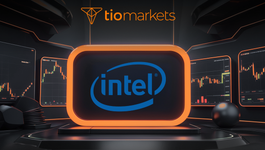ETCs and ETNs: What They Are and How They Differ
BY TIOmarkets
|May 29, 2024In the realm of investment vehicles, Exchange Traded Commodities (ETCs) and Exchange Traded Notes (ETNs) present intriguing options for investors looking to diversify their portfolios. While they share similarities in their names and are both traded on stock exchanges, their structures, risks, and implications for investors vary significantly.
Understanding Exchange Traded Commodities (ETCs)
Exchange Traded Commodities (ETCs) offer investors a pathway to invest in commodities, such as metals, energy, and agricultural goods, without the need to physically hold the assets.
What are ETCs?
ETCs are debt instruments that are secured by physical commodities or commodity contracts. They are designed to track the price of a commodity or a group of commodities. ETCs are listed on stock exchanges, making them easily accessible to investors.
Investors in ETCs gain exposure to commodity prices without the complexities of direct commodity trading. This includes avoiding issues related to storage, insurance, and transportation of physical commodities.
Benefits of Investing in ETCs
- Accessibility: ETCs provide a straightforward entry point for investors looking to gain exposure to commodities.
- Diversification: They offer an opportunity to diversify investment portfolios beyond traditional stocks and bonds.
- Liquidity: As exchange-traded products, ETCs can be bought and sold throughout the trading day at market prices.
Risks Associated with ETCs
While ETCs offer several benefits, they also come with risks. The value of commodities can be highly volatile, influenced by factors such as changes in supply and demand, geopolitical events, and variations in currency exchange rates. Additionally, ETCs may be affected by the performance of the underlying assets and the creditworthiness of the issuing institution.
Exploring Exchange Traded Notes (ETNs)
Exchange Traded Notes (ETNs) are unsecured debt securities that track an underlying index of securities and trade on major exchanges like stocks.
What are ETNs?
ETNs are issued by financial institutions and promise to pay the holder a return based on the performance of a market index minus applicable fees, without actually owning any assets. The return on an ETN is linked to the performance of a market index or other benchmark.
As debt securities, ETNs are subject to the credit risk of the issuer. If the issuer faces financial difficulties, it could impact the value of the ETN, regardless of the performance of the underlying index.
Benefits of Investing in ETNs
- Tax Efficiency: ETNs can offer tax benefits compared to other investment vehicles, as investors are not taxed on dividends but only on capital gains when they sell the ETN.
- Access to Difficult Markets: ETNs can provide exposure to markets that are difficult for individual investors to access directly.
- Precision: They allow for precise exposure to an index or strategy, including bearish or leveraged positions.
Risks Associated with ETNs
The primary risk of investing in ETNs is the credit risk of the issuer. Since ETNs are unsecured, if the issuer defaults, investors may lose their investment. Additionally, the market value of ETNs can fluctuate significantly, and there is no principal protection.
Comparing ETCs and ETNs
While both ETCs and ETNs offer alternative investment opportunities beyond traditional stocks and bonds, understanding their differences is crucial for informed investment decisions.
Key Differences
- Security Type: ETCs are secured by physical commodities or commodity contracts, whereas ETNs are unsecured debt securities.
- Risk Profile: ETCs carry the risk of commodity price volatility, while ETNs carry the credit risk of the issuer.
- Investment Exposure: ETCs provide direct exposure to commodity prices, while ETNs offer exposure to an index or benchmark performance.
Choosing Between ETCs and ETNs
The choice between investing in ETCs and ETNs depends on an investor's risk tolerance, investment goals, and interest in commodities or specific market indices. ETCs may be more suitable for investors looking for tangible asset exposure, while ETNs can be appealing for those seeking access to a broader range of assets or strategies without direct ownership.
Conclusion
Exchange Traded Commodities (ETCs) and Exchange Traded Notes (ETNs) each offer unique opportunities and risks for investors. By understanding the fundamental differences between these two types of investment vehicles, investors can make more informed decisions that align with their financial goals and risk tolerance. As with any investment, it's essential to conduct thorough research and consider consulting with a financial advisor to navigate the complexities of ETCs and ETNs.
Regulatory Environment for ETCs and ETNs
The regulatory environment surrounding ETCs and ETNs plays a crucial role in shaping the investment landscape for these products. Regulatory bodies such as the Securities and Exchange Commission (SEC) in the United States oversee the issuance and trading of ETCs and ETNs to ensure transparency and investor protection.
Regulations may dictate the disclosure requirements for issuers, the permissible investment strategies, and the reporting standards that govern ETCs and ETNs. Compliance with regulatory guidelines is essential for maintaining the integrity of these investment vehicles and safeguarding investor interests.
Performance Comparison of ETCs and ETNs
Analyzing the historical performance of ETCs and ETNs can provide valuable insights for investors evaluating these instruments. Performance metrics such as annualized returns, volatility measures, and correlation with broader market indices can help assess the risk-return profiles of ETCs and ETNs.
Comparing the performance of ETCs tracking different commodities or ETNs linked to diverse market indices can highlight the variability in returns and risk exposures across these investment options. Understanding the performance dynamics of ETCs and ETNs can aid investors in constructing well-balanced portfolios tailored to their investment objectives.
Factors Influencing ETC and ETN Performance
- Commodity Price Movements: ETC performance is directly impacted by fluctuations in commodity prices, influenced by supply-demand dynamics and macroeconomic factors.
- Issuer Creditworthiness: ETN performance is sensitive to the credit risk of the issuing institution, with higher credit ratings typically associated with lower default probabilities.
- Market Conditions: Both ETCs and ETNs can be influenced by broader market trends, interest rate changes, and geopolitical events that affect investor sentiment and risk appetite.
Performance Evaluation Strategies
Investors can employ various strategies to evaluate the performance of ETCs and ETNs effectively. Techniques such as benchmarking against relevant indices, conducting scenario analyses, and assessing risk-adjusted returns can provide comprehensive insights into the strengths and weaknesses of these investment vehicles.
By adopting a systematic approach to performance evaluation, investors can make data-driven decisions regarding the inclusion of ETCs and ETNs in their investment portfolios. Regular monitoring and review of performance metrics are essential to ensure alignment with investment objectives and risk preferences.
Market Trends Impacting ETCs and ETNs
The evolving landscape of financial markets and global economic trends can significantly influence the performance and popularity of ETCs and ETNs. Market trends such as shifts in commodity prices, regulatory developments, and technological advancements can shape investor perceptions and demand for these investment products.
Emerging market trends, such as the growing focus on sustainable investing and the rise of digital assets, may create new opportunities and challenges for ETCs and ETNs. Understanding and adapting to market trends is essential for investors seeking to optimize their investment strategies and capitalize on evolving market dynamics.
Technological Innovations in ETCs and ETNs
- Blockchain Integration: Some ETCs and ETNs are exploring the integration of blockchain technology to enhance transparency, security, and efficiency in trading and settlement processes.
- Algorithmic Trading: Automation and algorithmic trading strategies are increasingly being utilized in managing ETC and ETN portfolios to capitalize on market opportunities and mitigate risks.
- Data Analytics: Advanced data analytics tools are being employed to analyze market trends, investor behavior, and performance metrics of ETCs and ETNs, enabling more informed decision-making.
Impact of Regulatory Changes
Regulatory changes, such as updates to disclosure requirements or risk management standards, can have a profound impact on the operational framework and market dynamics of ETCs and ETNs. Compliance with evolving regulatory standards is essential for issuers and investors to navigate changing regulatory landscapes effectively.
Adapting to regulatory changes may involve enhancing transparency, strengthening risk management practices, and ensuring alignment with investor protection guidelines. Proactive engagement with regulatory authorities and industry stakeholders can help mitigate risks associated with regulatory uncertainties and foster a resilient investment environment.
Conclusion
Exchange Traded Commodities (ETCs) and Exchange Traded Notes (ETNs) offer investors diverse opportunities to access commodity markets and indices through innovative investment vehicles. By comprehensively understanding the structures, risks, and performance dynamics of ETCs and ETNs, investors can make informed decisions that align with their investment objectives and risk preferences.
Continuous monitoring of market trends, regulatory developments, and technological innovations is essential for adapting investment strategies to changing market conditions and optimizing portfolio performance. Leveraging the unique features of ETCs and ETNs can enhance portfolio diversification and potentially generate attractive risk-adjusted returns for investors in dynamic and evolving financial markets.
Start Trading ETCs and ETNs with TIOmarkets
Ready to take your investment strategy to the next level with ETCs and ETNs? Join TIOmarkets, a top-rated forex broker, and access a world of trading possibilities. With over 170,000 accounts opened in more than 170 countries, TIOmarkets offers a robust platform to trade Forex, indices, stocks, commodities, and futures markets with low fees. Expand your portfolio across 300+ instruments in 5 markets and benefit from our comprehensive suite of educational resources. Create a Trading Account today and start harnessing the potential of ETCs and ETNs in your investment journey.

Risk disclaimer: CFDs are complex instruments and come with a high risk of losing money rapidly due to leverage. You should consider whether you understand how CFDs work and whether you can afford to take the high risk of losing your money. Never deposit more than you are prepared to lose. Professional client’s losses can exceed their deposit. Please see our risk warning policy and seek independent professional advice if you do not fully understand. This information is not directed or intended for distribution to or use by residents of certain countries/jurisdictions including, but not limited to, USA & OFAC. The Company holds the right to alter the aforementioned list of countries at its own discretion.
Join us on social media

Behind every blog post lies the combined experience of the people working at TIOmarkets. We are a team of dedicated industry professionals and financial markets enthusiasts committed to providing you with trading education and financial markets commentary. Our goal is to help empower you with the knowledge you need to trade in the markets effectively.
Related Posts





